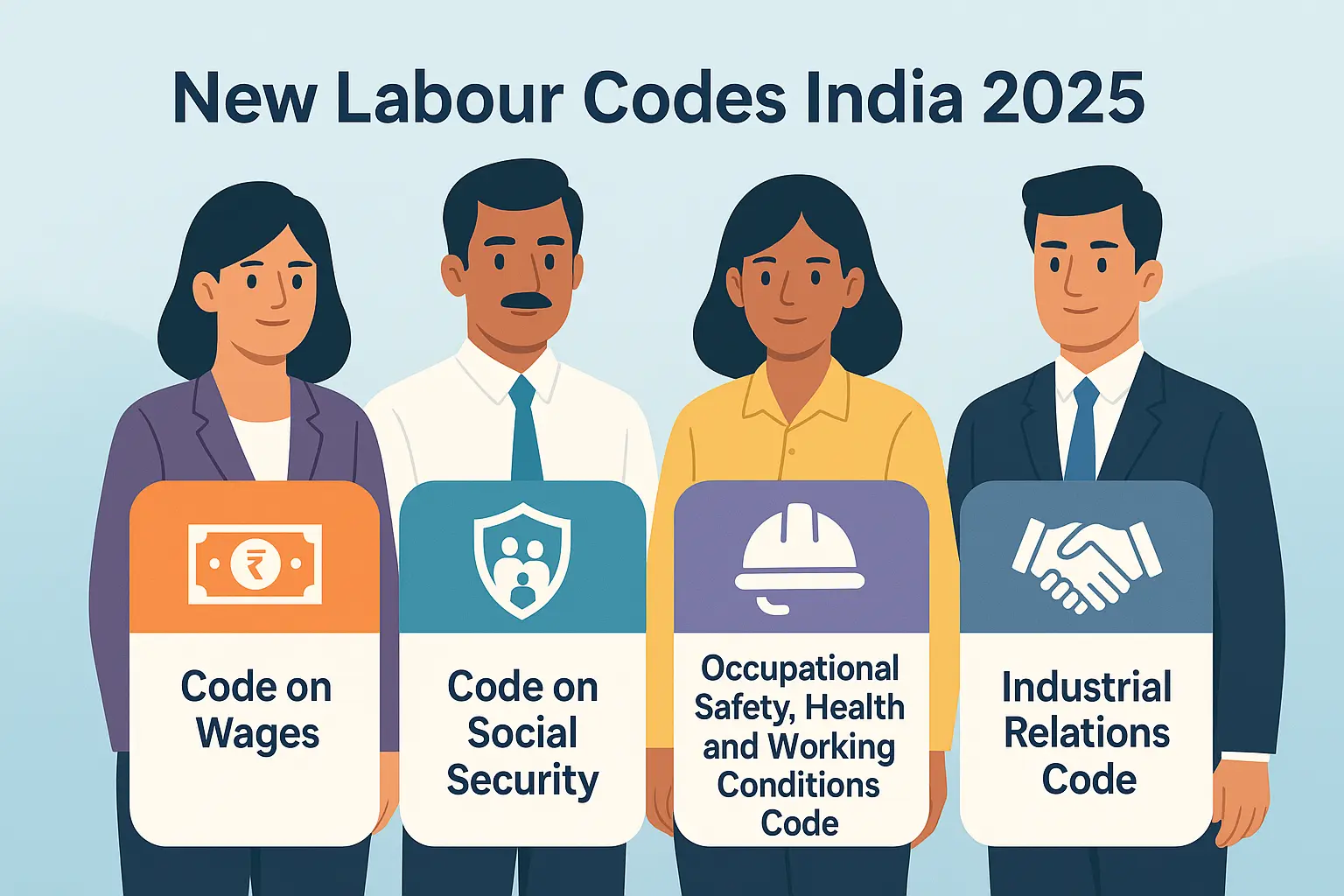New Labour Codes India 2025 marks the most significant transformation in India’s labour framework in decades. With the Government of India officially implementing all four labour codes on 21 November 2025, the country now enters a new era of simplified compliance, enhanced worker protection, and a future-ready workforce. These reforms consolidate 29 older laws into a modern, efficient system that impacts every employee and employer across India—corporate workers, MSME employees, gig workers, platform workers, contract labour, women workers, and migrant workers.
The New Labour Codes India 2025 bring stronger social security, uniform wage protection, improved working conditions, gender equality, and better safety standards across industries. This guide explains every important change in a clear, easy-to-understand manner so workers and businesses can fully understand the new rules.
Table of Contents
Why India Needed New Labour Codes
India’s earlier labour laws were created between the 1930s and 1950s, when industrial work was very different. Today’s economy includes IT, gig platforms, e-commerce, modern factories, and digital media — but the laws had not evolved equally.
Problems with the old laws included:
- Complex compliance
- Multiple registrations and filings
- Limited wage protection
- No formal recognition of gig workers
- Weak social security coverage
- Restrictions on women’s employment
- Outdated safety standards
The new Labour Codes fix these long-standing problems and create a future-ready system for India’s workforce.
What Are the Four New Labour Codes (2025)?
The Government has consolidated 29 laws into these four codes:
- Code on Wages, 2019
- Industrial Relations Code, 2020
- Code on Social Security, 2020
- Occupational Safety, Health & Working Conditions (OSHWC) Code, 2020
These codes modernise wage rules, social security, safety norms, and employment conditions across the country. The implementation date is 21 November 2025.
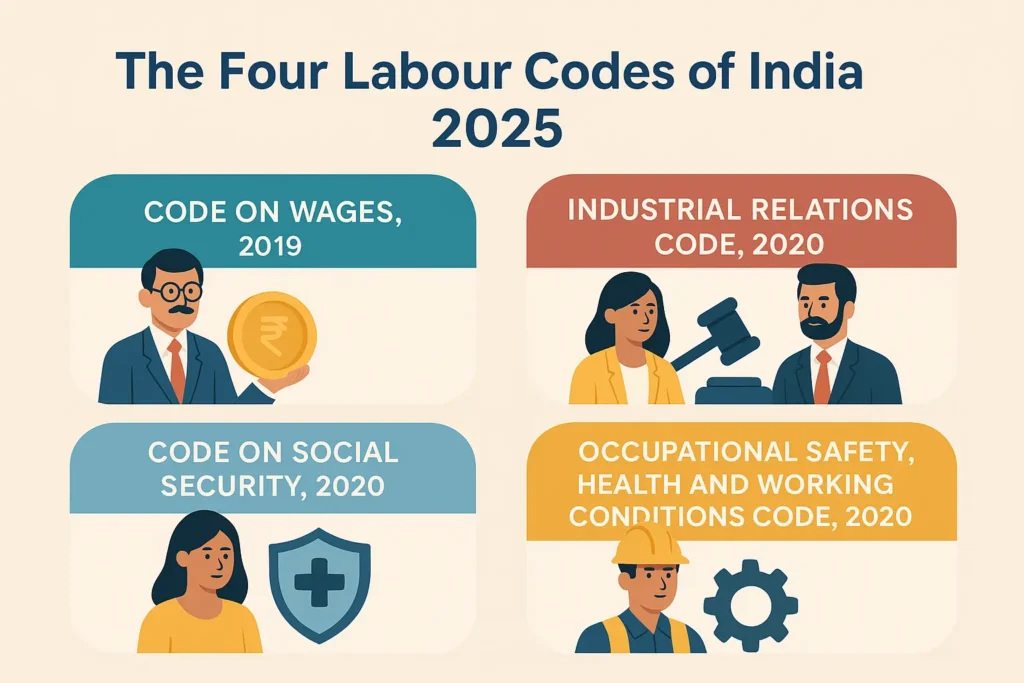
Key Highlights of the New Labour Codes India 2025
The new codes dramatically expand worker protection. Here is the complete breakdown:
1. Mandatory Appointment Letters for All Employees
Earlier: Many workers, especially in informal and gig sectors, received no written employment proof.
Now: Employers must issue mandatory appointment letters to all workers.
Benefits:
- Formal employment record
- Transparency in wages, role, benefits
- Better access to PF, ESI, insurance
- Reduced exploitation
This applies to IT companies, MSMEs, textile factories, media workers, contract workers and more.
2. How New Labour Codes India 2025 Change Wage Rules
The Code on Wages, 2019 gives every worker — including gig and unorganised workers — a statutory right to minimum wages.
The Government will also notify a National Floor Wage, below which no state can go.
Impact:
- Fair wages across industries
- Income stability
- Reduced wage discrimination
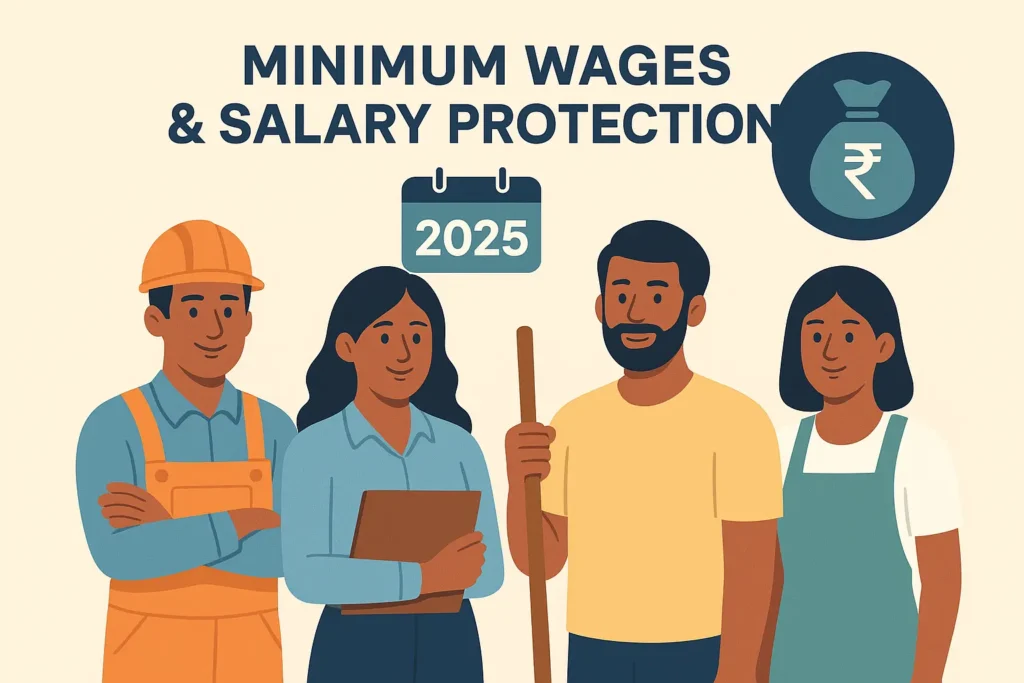
3. Timely Payment of Wages to All
Earlier laws had no strict enforcement on timely wage payment.
The new codes mandate that:
- Salaries must be paid on or before the 7th of every month.
- On resignation/termination, wages must be paid within 2 working days.
This is a major relief for millions of employees.
4. Free Annual Health Check-Ups (Age 40+)
Under new occupational safety provisions, employers must provide free annual health checkups to all workers over the age of 40.
Why this matters:
- Early detection of lifestyle diseases
- Lower healthcare costs
- Improved productivity
5. Enhanced ESIC Coverage (PAN-India)
Social Security Improvements Under New Labour Codes India 2025
One of the biggest changes:
ESIC benefits are now extended PAN-India. Even establishments with one employee in hazardous processes are covered.
All workers — including migrants — can now receive ESI medical facilities.
6. Women’s Safety and Night Shift Rules Under New Labour Codes India 2025
Women can now work in any occupation, including night shifts, heavy machinery, underground mining and hazardous sectors — with their consent and required safety arrangements.
Mandatory Safety Measures:
- Safe transportation
- CCTV surveillance
- Security staff
- No gender discrimination
- Mandatory women representation in grievance committees
This is a major step for women’s economic empowerment.
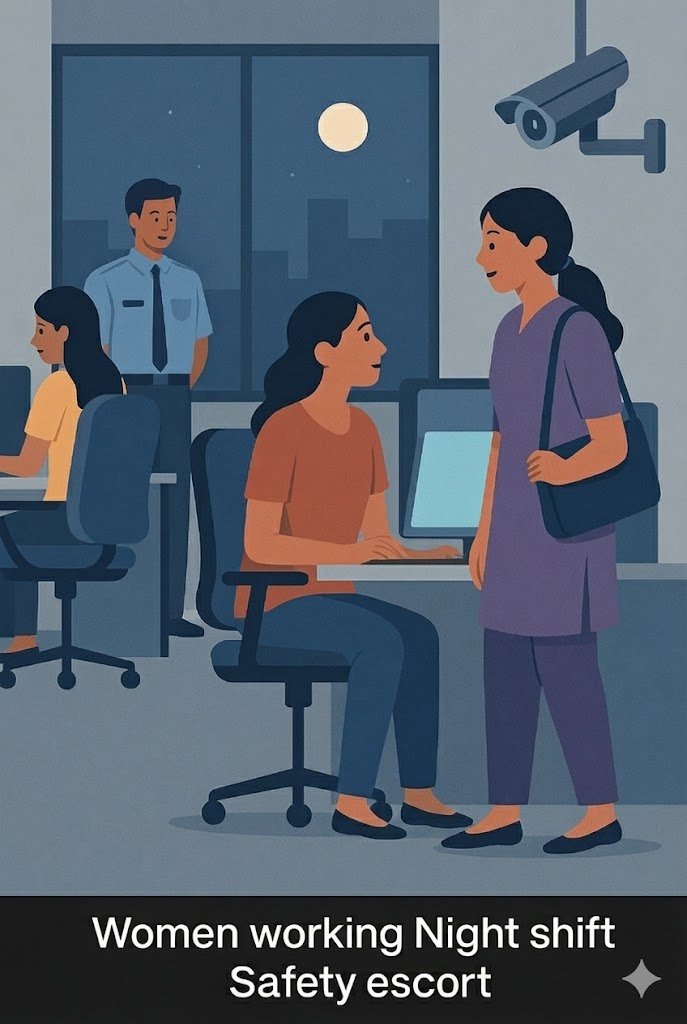
7. Overtime at Double Wages
Workers must be paid at least double their normal wage for overtime.
All overtime must be based on workers’ consent.
8. Leave Eligibility After 180 Days (Earlier 240 Days)
Workers can now avail annual leave after 180 days of work, instead of 240.
This benefits new employees, contract workers, and workers who change jobs often.
9. Gratuity After 1 Year for Fixed-Term Employees
Earlier, gratuity required 5 years of continuous service.
Now, fixed-term employees get gratuity after just 1 year.
This benefits IT, media, gig, and project-based sectors significantly.
Benefits of New Labour Codes India 2025 for Employees
Impact of New Labour Codes India 2025 on Gig & Platform Workers
For the first time in Indian history, gig and platform workers have formal recognition.
Aggregators like Ola, Uber, Zomato, Swiggy, Urban Company must contribute 1–2% of their turnover towards gig worker social security funds.
Benefits:
- Accident insurance
- Life insurance
- Disability cover
- Health benefits
- Portability across states
- Aadhaar-based Universal Account Number
Gig workers finally get long-overdue social protection.
11. Safety, Health & Welfare for Sector-Specific Workers
The new codes provide tailored benefits for different industries:
For MSME Workers
- Minimum wages guaranteed
- Social security based on employee count
- Canteen, rest area, drinking water mandatory
- Standard working hours and paid leave
For Factory & Hazardous Industry Workers
- Mandatory safety committees
- National OSH standards
- Free annual health check-ups
- Safety gear and training mandatory
- Women can work in hazardous jobs with consent
For IT & ITES Staff
- Salary must be released by 7th
- Faster dispute resolution
- Equal pay for equal work
- Mandatory appointment letters
- Women can work night shifts
For Audio-Visual & Digital Media Professionals
- Appointment letters mandatory
- Timely wage payment
- Overtime at double rate
- Full social security benefits
For Mine Workers
- Commuting accidents considered employment-related
- Central safety standards
- Free annual health check-ups
- Working hours capped at 8–12 per day
For Plantation Workers
- OSHWC Code applicable
- Protective equipment mandatory
- ESI coverage for workers & families
For Export Sector
- Gratuity, PF, social benefits for fixed-term workers
- Leave after 180 days
- Night shifts allowed with safety
12. Simplified Compliance for Industry
The codes reduce compliance burden significantly:
- Single registration
- Single licence
- Single return
- Inspector-cum-facilitator system
- Faster dispute resolution via industrial tribunals
This encourages ease of doing business and promotes industrial growth.
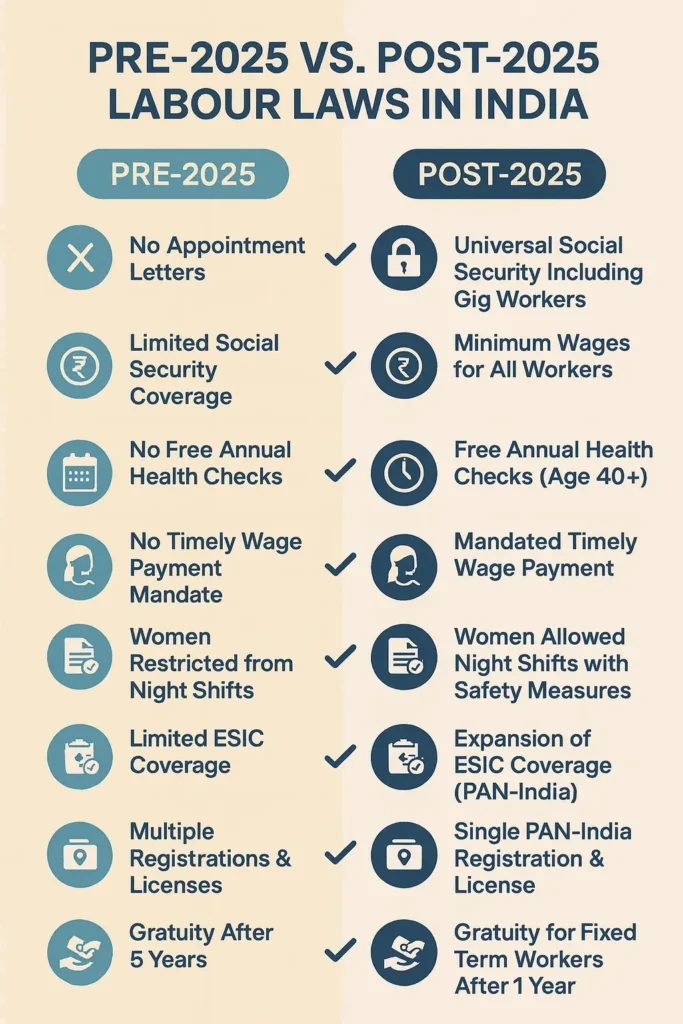
What It Means for India’s Future
The implementation of New Labour Codes India 2025 is expected to:
- Increase formal employment
- Reduce exploitation
- Expand social protection to 64%+ workforce
- Improve global competitiveness
- Empower women, gig workers & migrant workers
- Strengthen industrial productivity
- Build a future-ready workforce
India now moves towards a pro-worker, pro-youth, pro-women, pro-employment labour environment.
What is the implementation date of the new labour codes in India?
The Four Labour Codes officially came into effect on 21 November 2025, replacing 29 old labour laws.
Who is covered under the new labour codes?
All workers — including gig workers, platform workers, MSME workers, IT employees, contract workers, migrant workers, and women in all sectors — are covered.
What is the new rule for gratuity under the Labour Codes 2025?
Fixed-term employees are now eligible for gratuity after 1 year of continuous service.
Can women work night shifts under the new labour codes?
Yes. Women can work night shifts in all sectors, including factories, mines and IT, with mandatory safety arrangements.
Are gig workers covered under social security?
Yes. For the first time, gig and platform workers are included under social security, with aggregators contributing to welfare funds.
What is the rule for annual leave under the labour codes?
Employees can now get annual paid leave after 180 days of work instead of 240.
Do the new codes simplify compliance for employers?
Yes. The codes create single registration, single licence, single return, and an inspector-cum-facilitator system.
